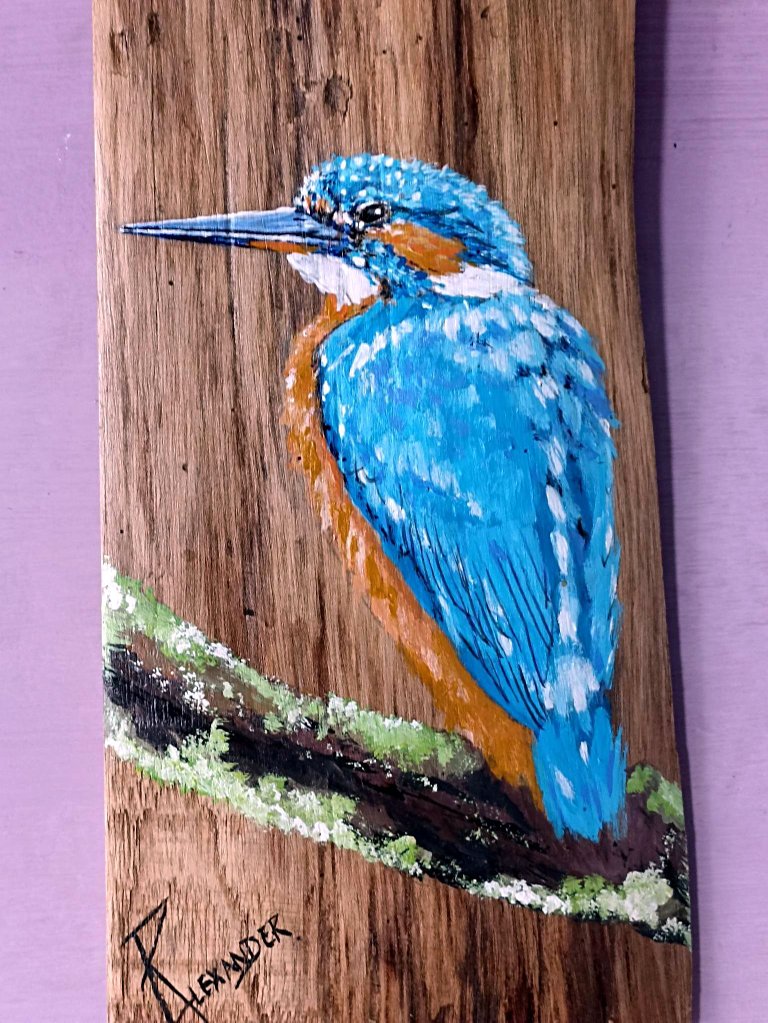
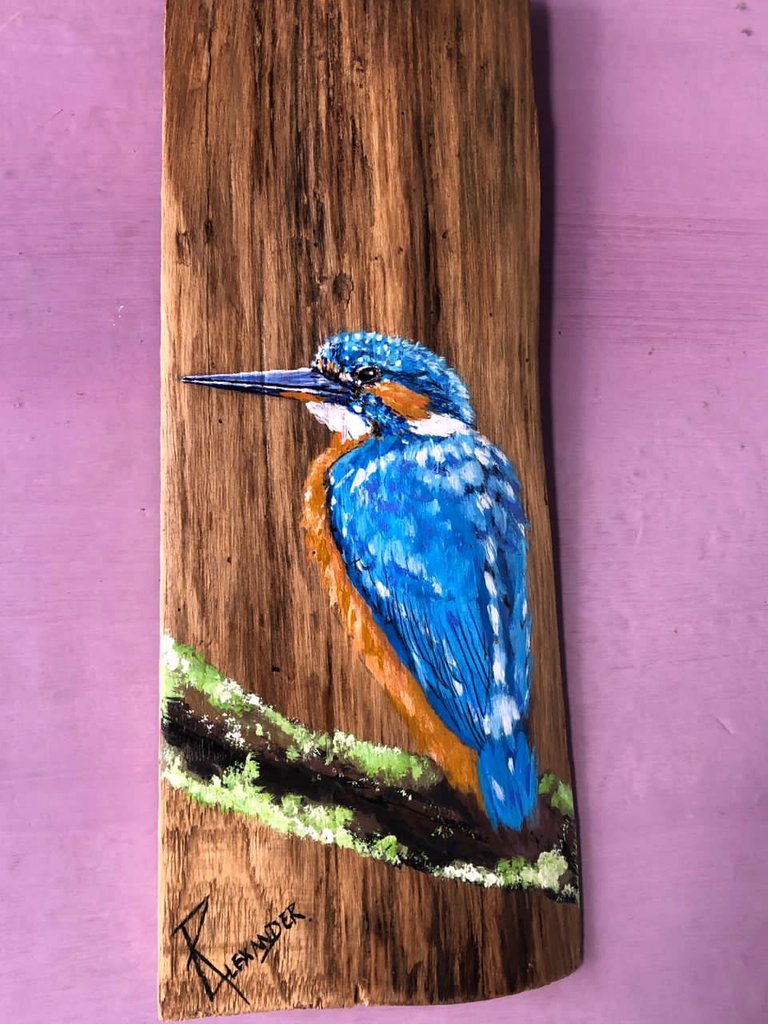
Hello friends, greetings to everyone from Venezuela, tonight I want to show my latest work, which is a painting in acrylic paint on wood, I had this wood left over from my previous work, so I decided to use it to draw a different species of bird. It is a Kingfisher, a small bird that feeds on small fish from some rivers, it has one of the most beautiful plumage that can exist. The wood on which it was painted measures 35 centimeters long by 15 centimeters wide, I hope you enjoy it.
Hola amigos, saludos para todos desde Venezuela, esta noche quiero mostrar mi último trabajo que se trata de un cuadro en pintura acrílica sobre madera, esta madera me sobró del trabajo anterior, así que decidí usarla para dibujar otra especie diferente de ave. Se trata de un Kingfisher, un pequeño pajaro que se alimenta de pequeños peces de algunos ríos, tiene uno de los plumajes más hermosos que pueden existir. La madera sobre la cual fue pintado tiene unas medidas de 35 centímetros de largo por 15 centímetros de ancho, espero que lo disfruten.

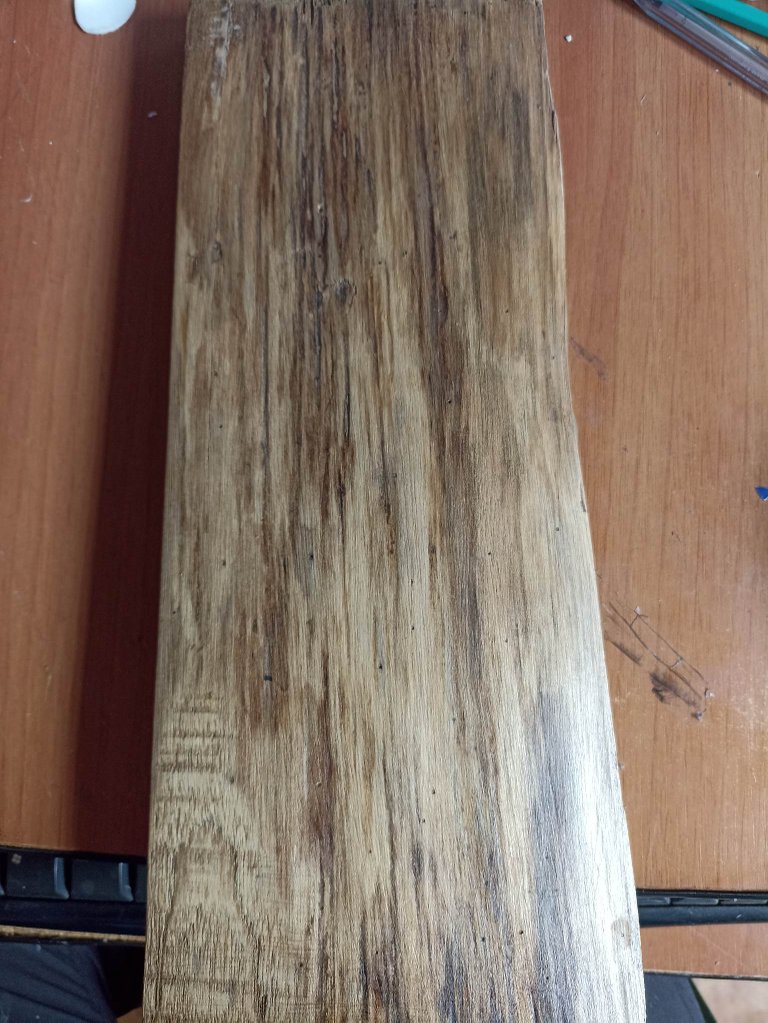 | 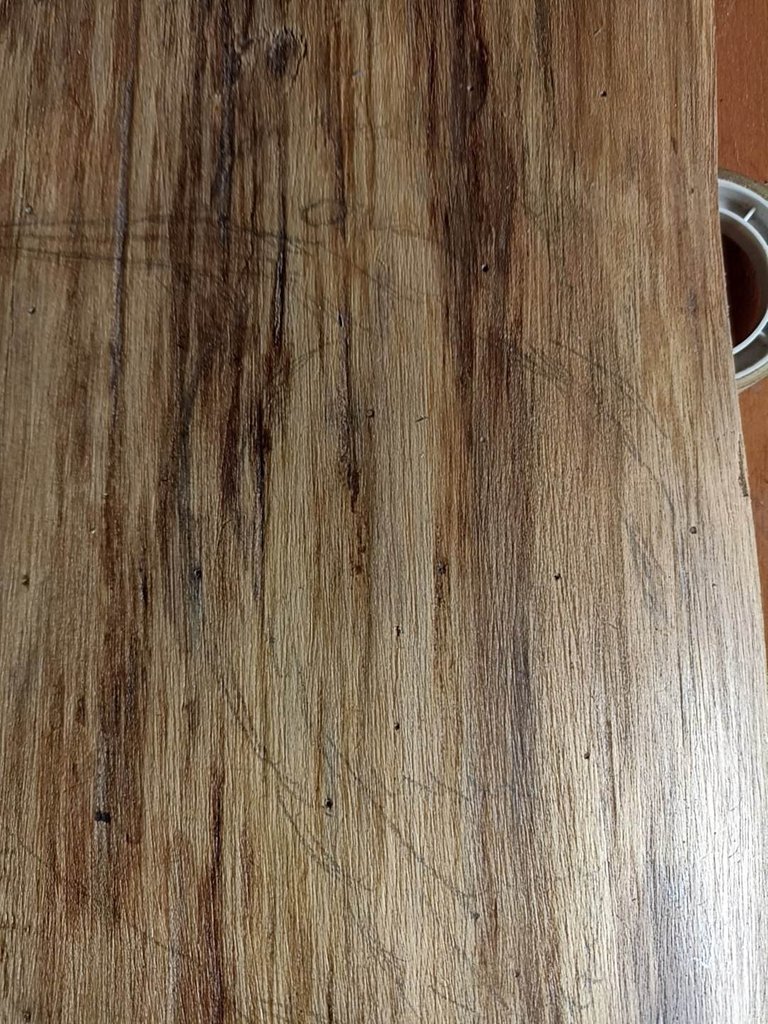 | 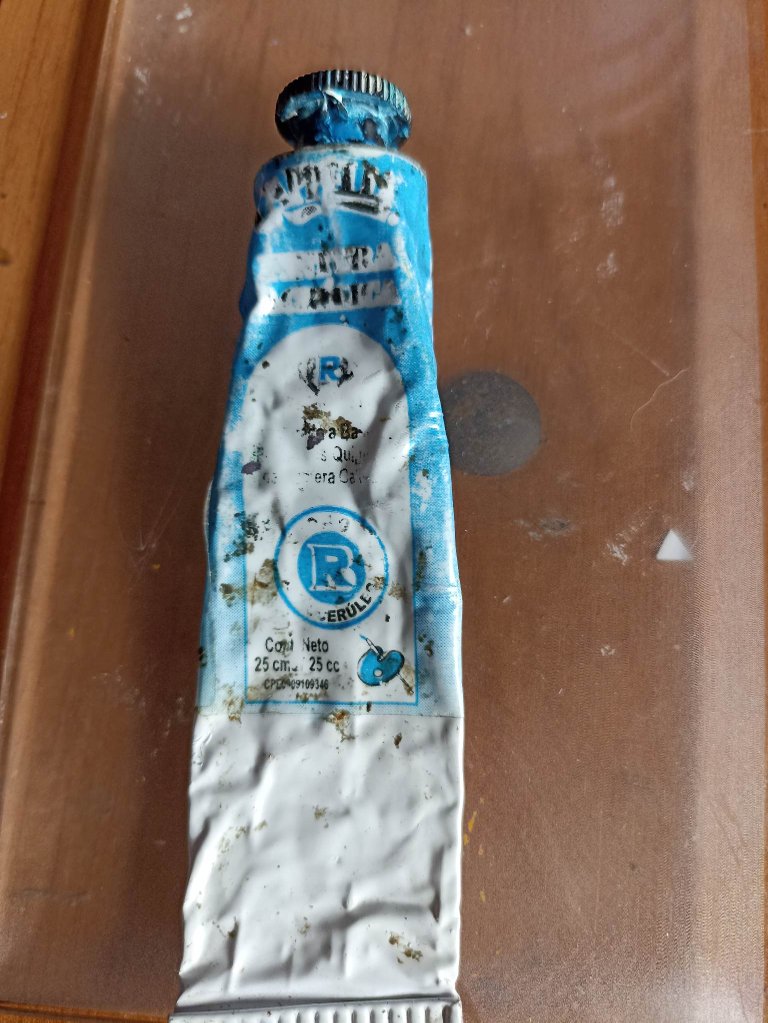 |
|---|---|---|
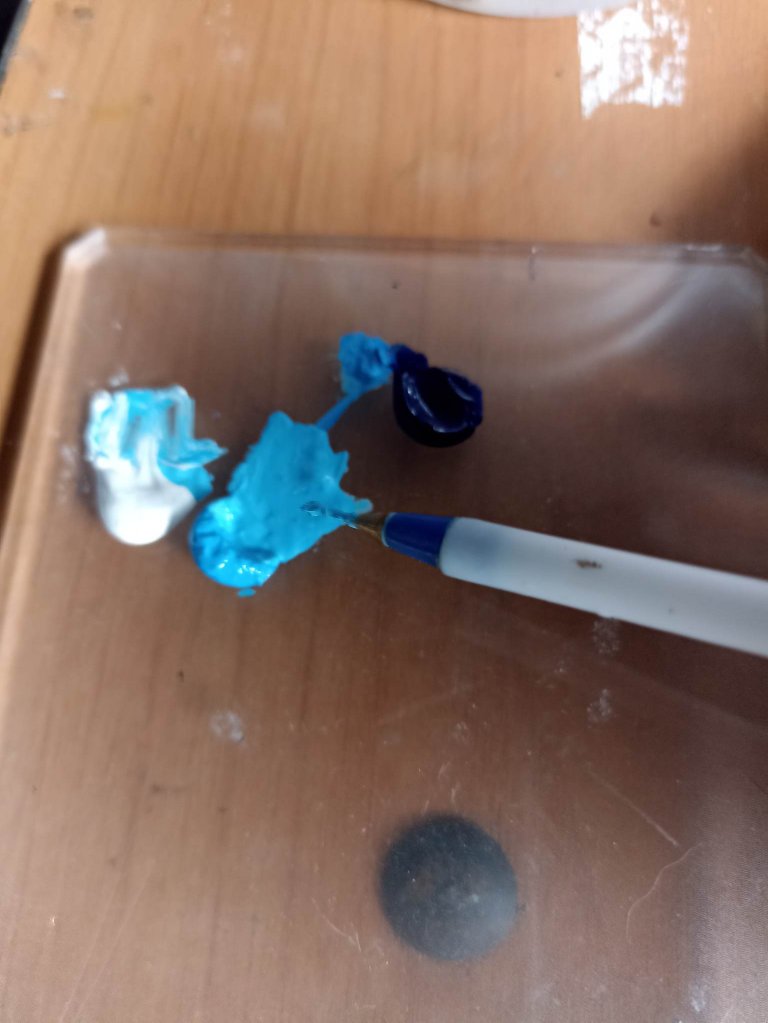 | 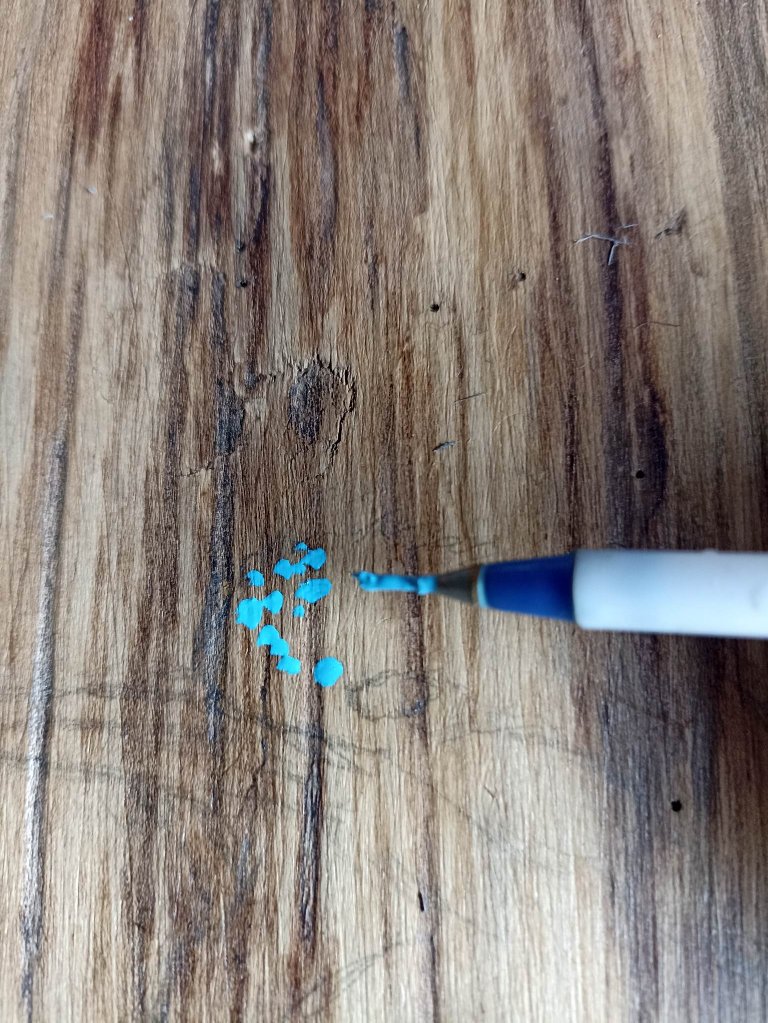 | 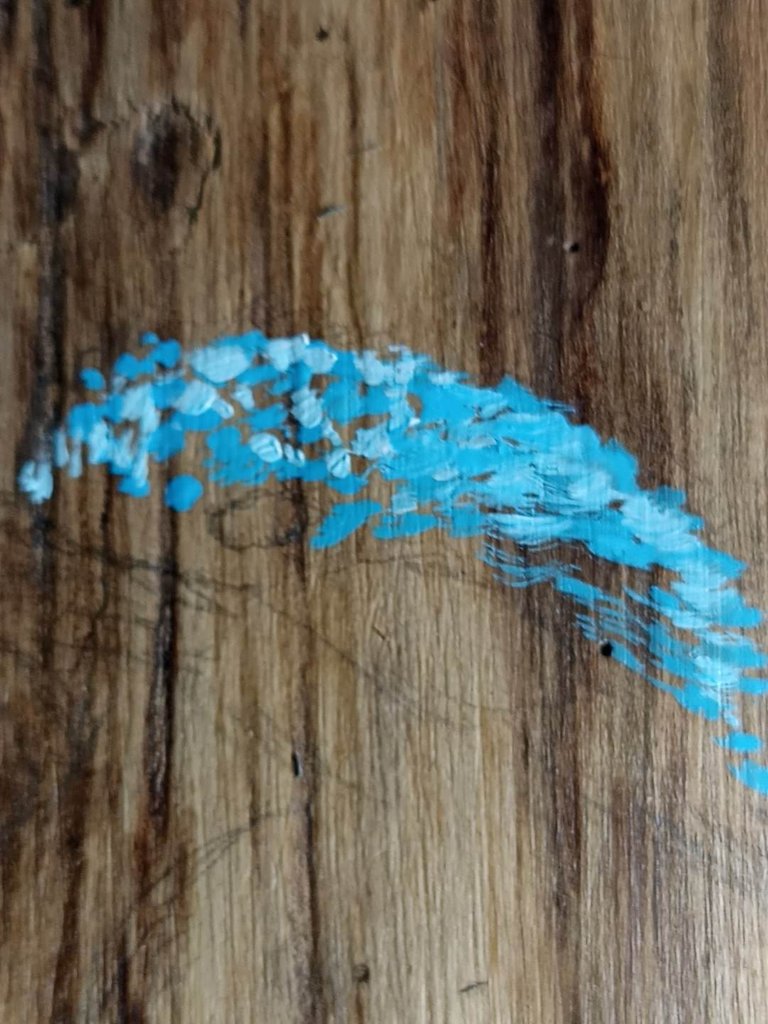 |
Here I have prepared the wood better than the previous time, since I used more specialized sandpaper for wood, I investigated which were the best since the ones I used previously were for sanding metal. After applying several sanding sessions I put varnish on it to protect the wood, then I let it dry and sanded again, I did this process 3 times, that was the advice of an experienced carpenter. Then I made the pencil drawing of the bird and I prepared the acrylic paint in blue, a cerulean tone, with some white and ultramarine blue, with a very thin bristle brush I began to make small brushstrokes for the feathers in the upper area of the head.
Aquí he preparado mejor la madera que la vez anterior, ya que utilicé lijas más especializadas para madera, investigué cuales eran las mejores ya que las que usé anteriormente eran para lijar metal. Luego de aplicar varias sesiones de lijado le puse barníz para proteger la madera, luego dejé secar y volví a lijar, este proceso lo hice 3 veces, ese fue el consejo de un carpintero experimentado. Despues hice el dibujo en lápiz del pajaro y perparé la pintura acrílica de color azul, tono ceruleo, con algo de blanco y azul ultramar, con un pincél de cerda muy delgada comencé a hacer pequeñas pinceladas para las plumas del área superior de la cabeza.

 |  | 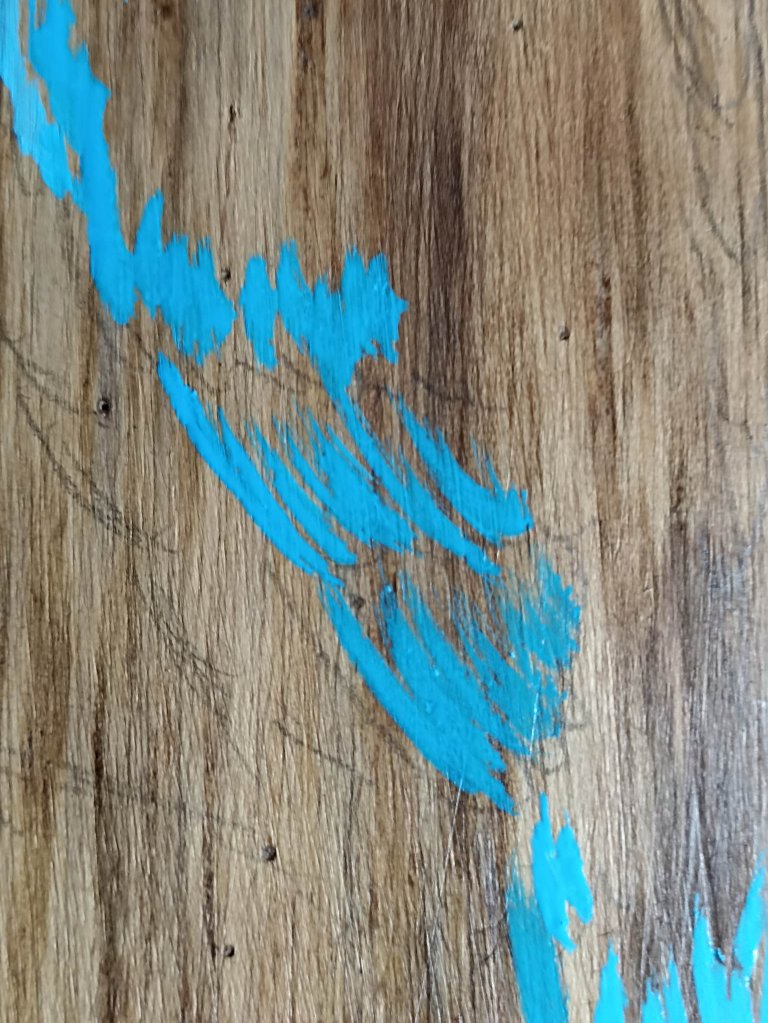 |
|---|---|---|
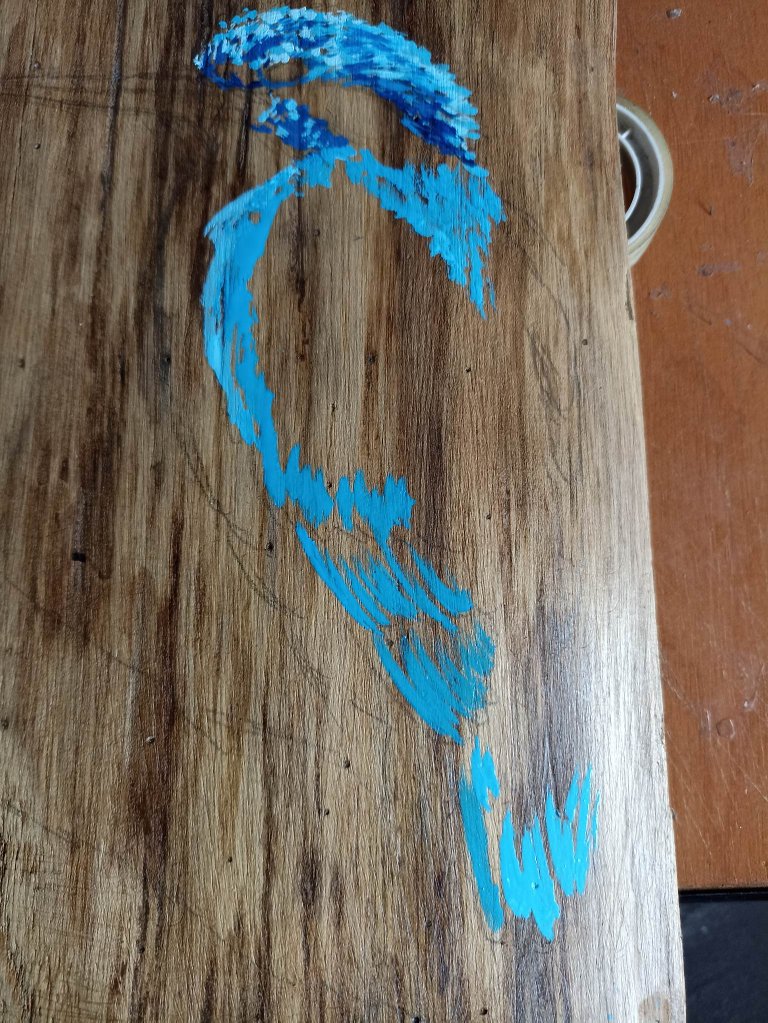 | 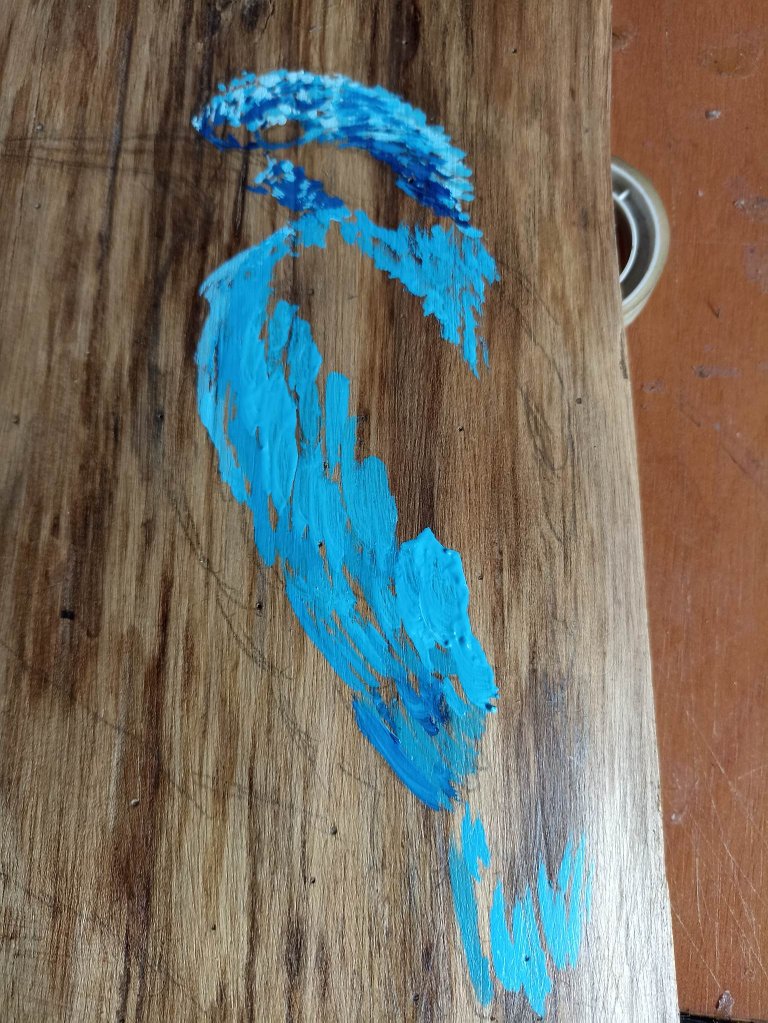 |  |
Then mixing a little more ultramarine blue I start to make small shadows where I had started to paint. I also change the brush and use a wider and flattened one that is used to make bird feathers, I always like how it looks when I use this brush, so then I go down the wings until I cover most of the body. Always playing with the mixtures to achieve a better contrast in the clouds.
Luego mezclando un poco más de color azul ultramar comienzo a hacer pequeñas sombras donde había comenzado a pintar. También cambio de pincel y uso uno más ancho y achatado que sirve para hacer plumas para aves, siempre me gusta como luce cuando uso este pincel, así entonces voy bajando por las alas hasta cubrir la mayor parte del cuerpo. Siempre jugando con las mezclas para lograr un mejor contraste en las nubes.

 | 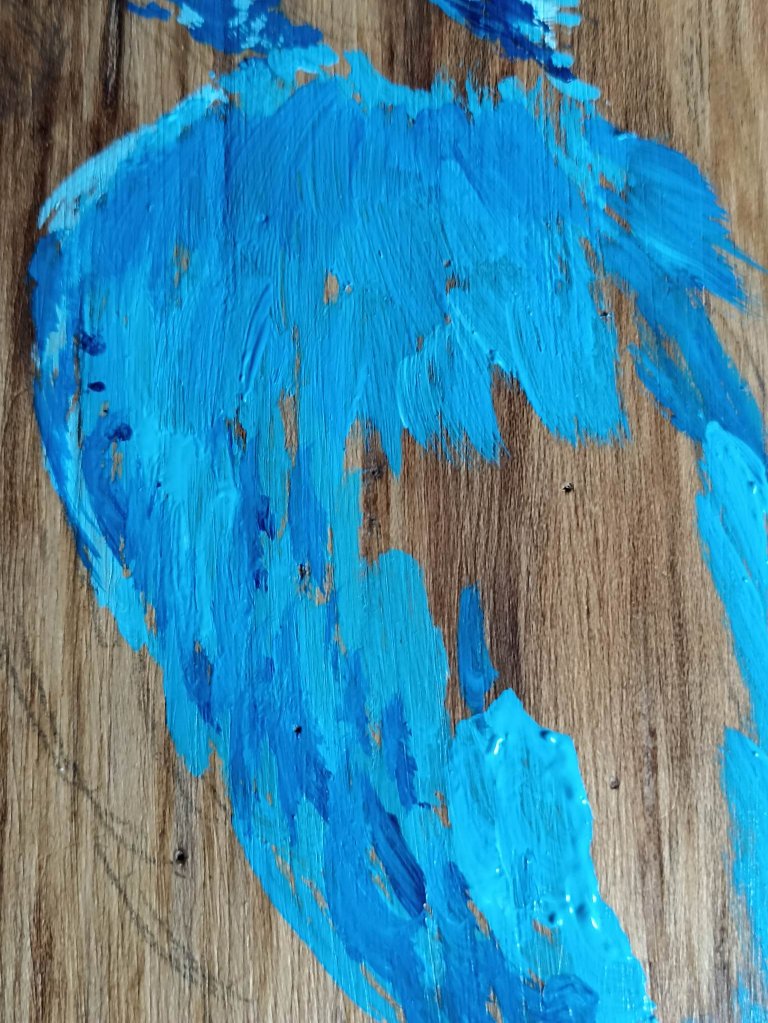 | 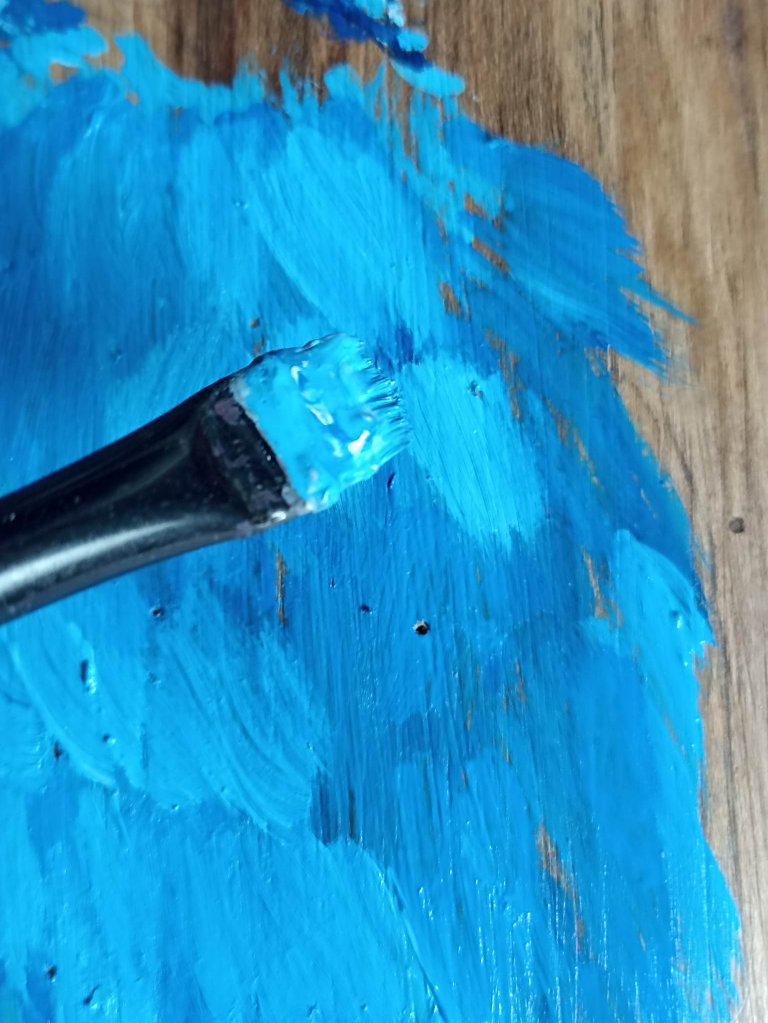 |
|---|---|---|
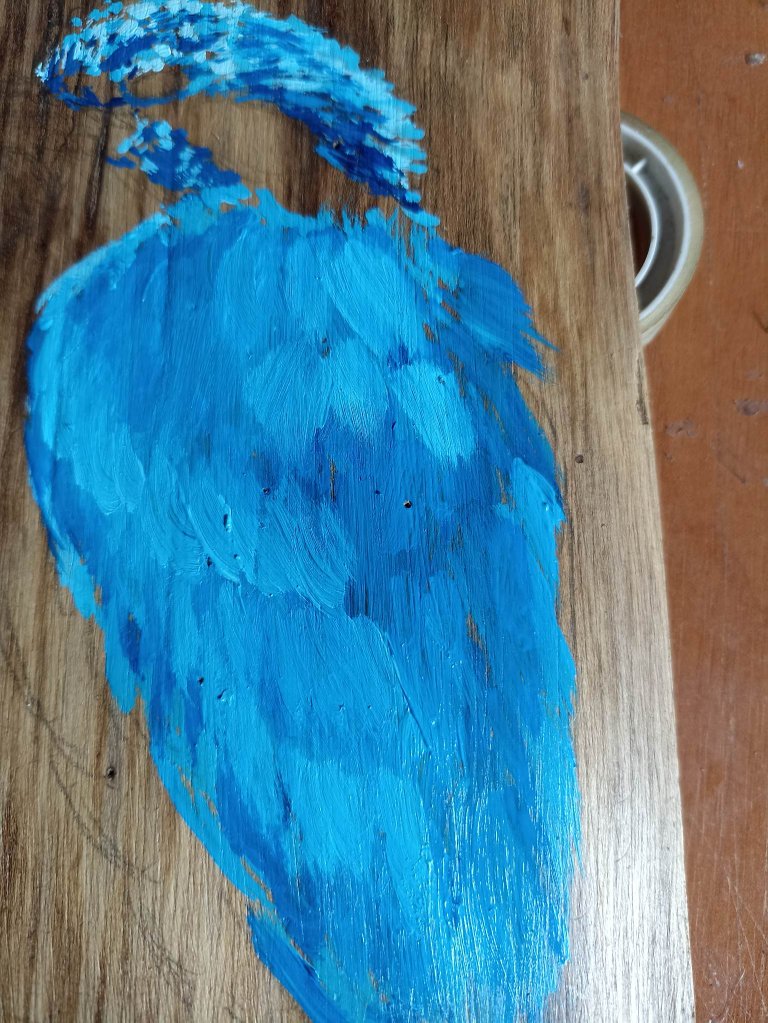 | 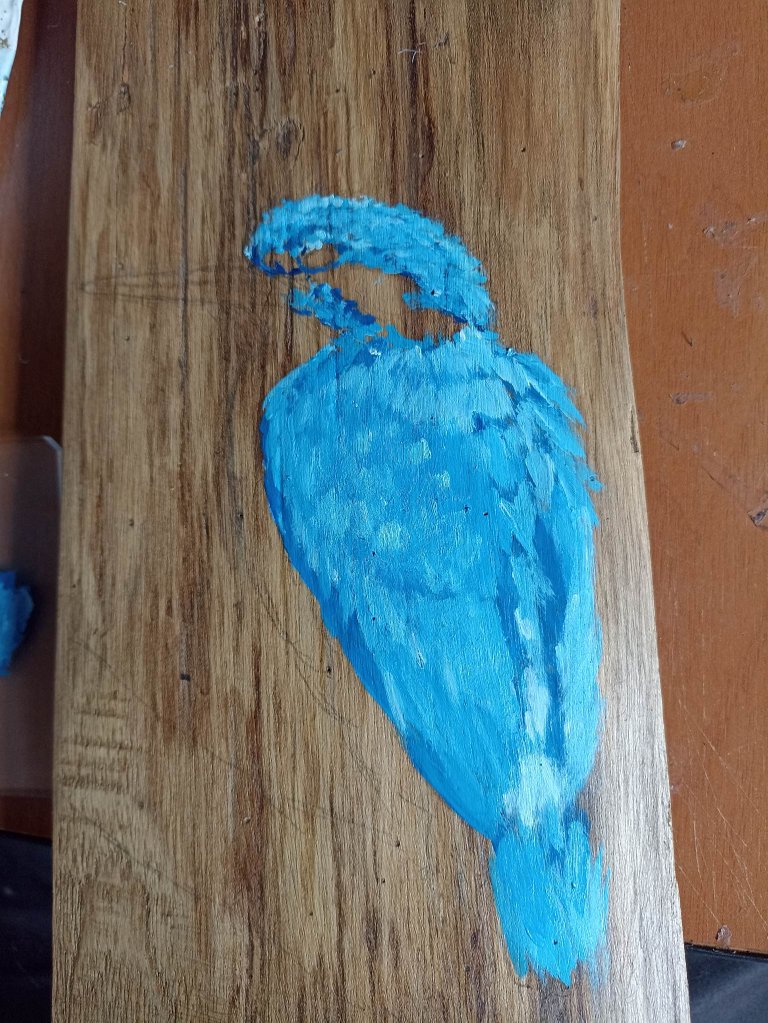 | 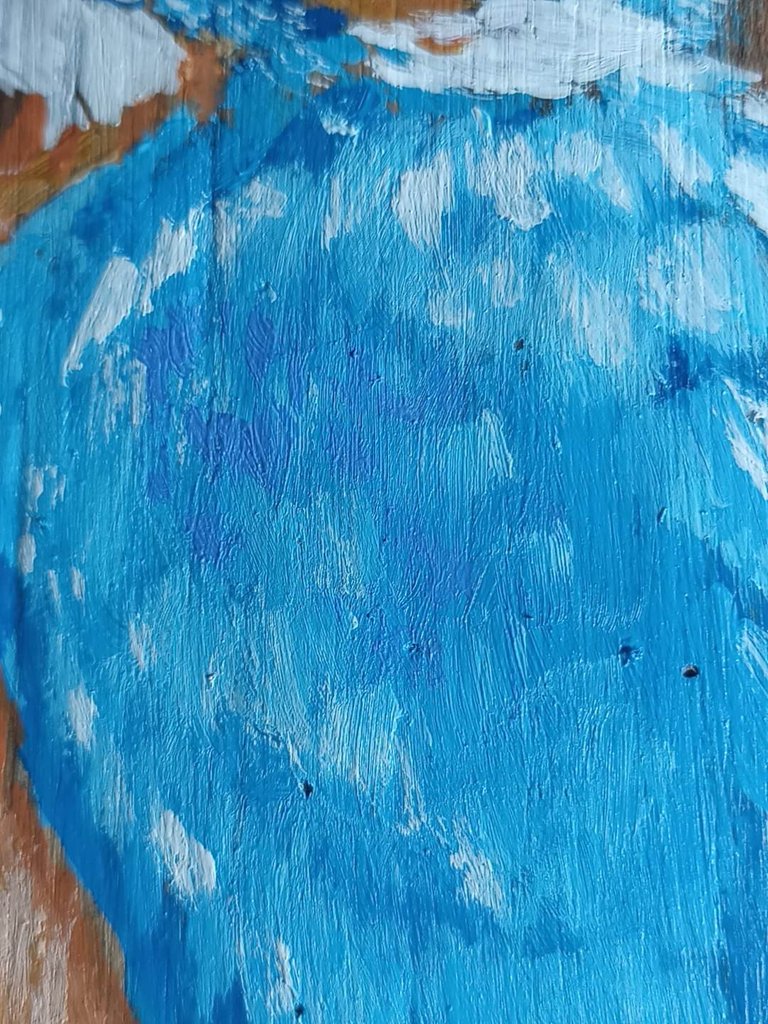 |
Next I do two and three more layers with different brushstrokes to make the feathers of the wings, thus giving a better tone, contrast and also volume to the feathers. You have to make the best use of the opportunities offered by acrylic paint, with the brush that I mentioned before the effect is the best, in the same way we add brushstrokes of white to make the tips of the feathers.
Seguidamente hago dos y tres capas más con diferentes pinceladas para hacer las plumas de las alas, así se le da un mejor tono, constraste y también volumen a las plumas. Hay que aprovechar lo mejor posible las oportunidades que brinda la pintura acrílica, con el pincel que mencioné anteriormente el efecto es el mejor, de la misma forma agregamos pinceladas de color blanco para hacer las puntas de las plumas.

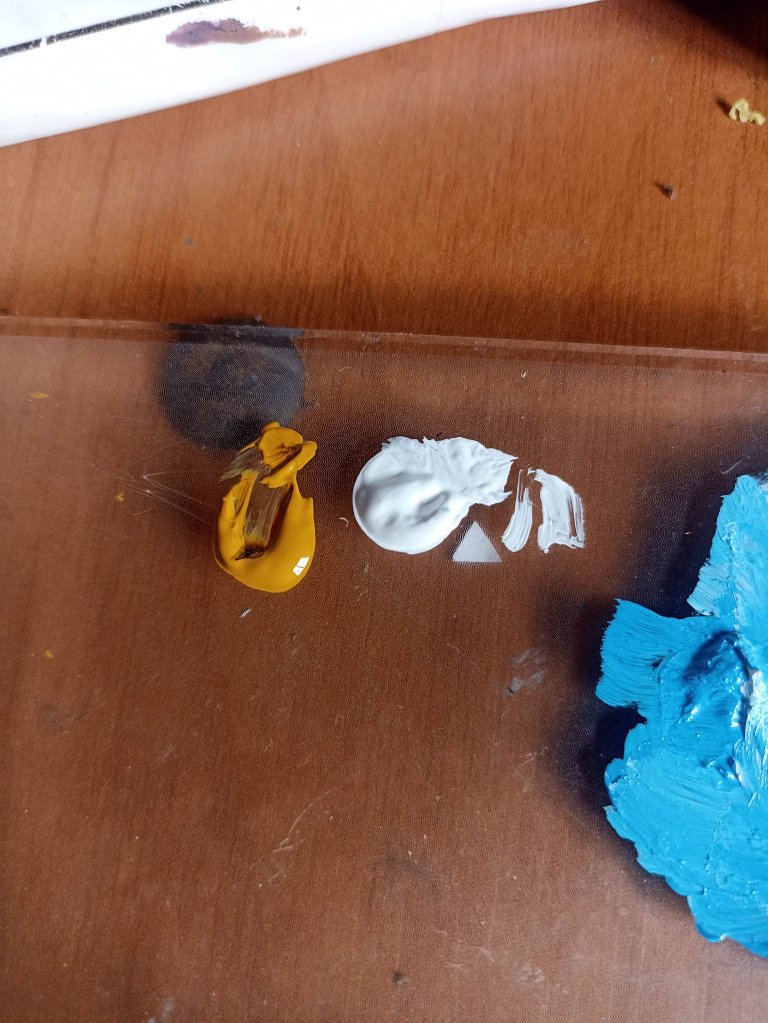 | 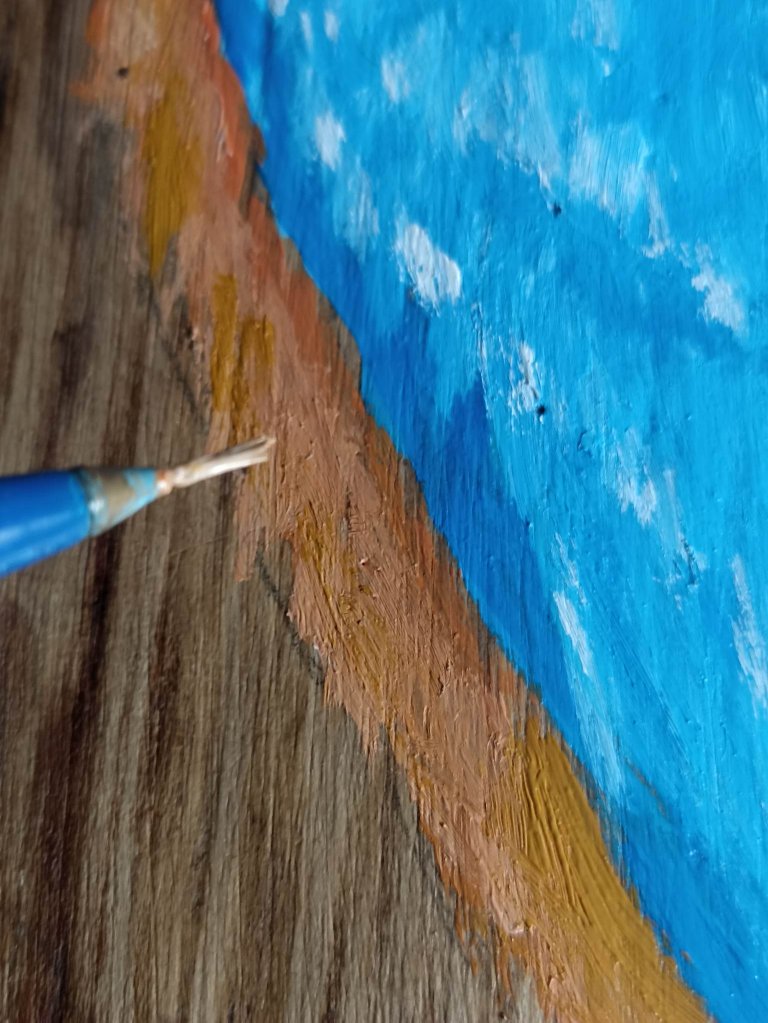 | 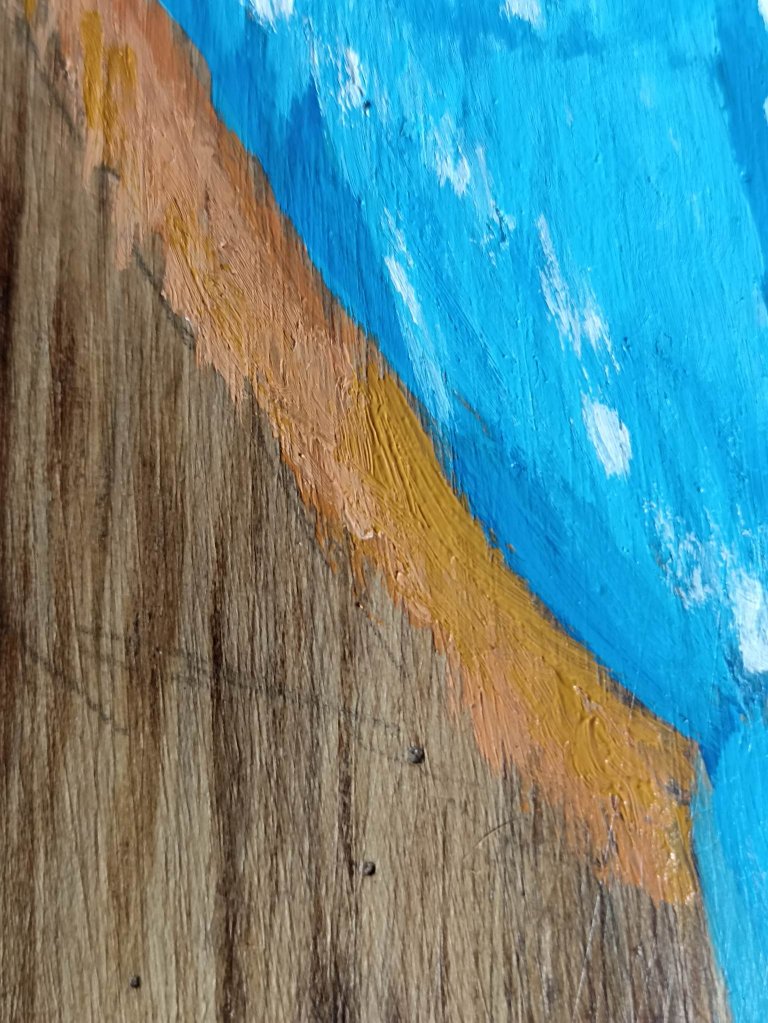 |
|---|---|---|
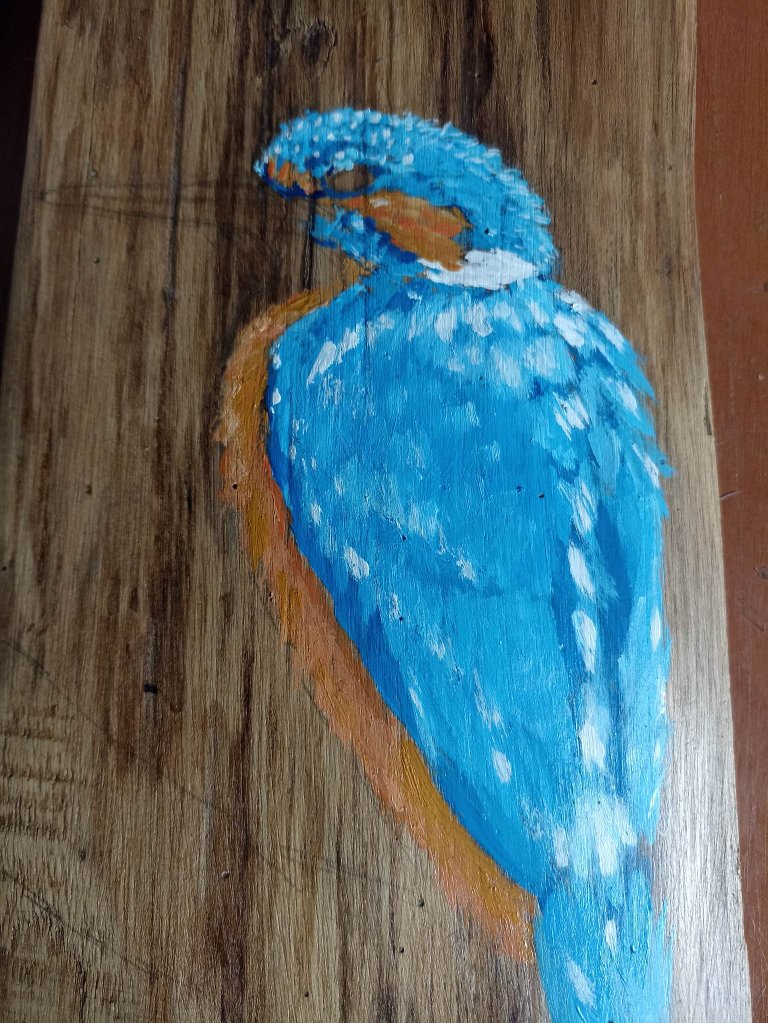 | 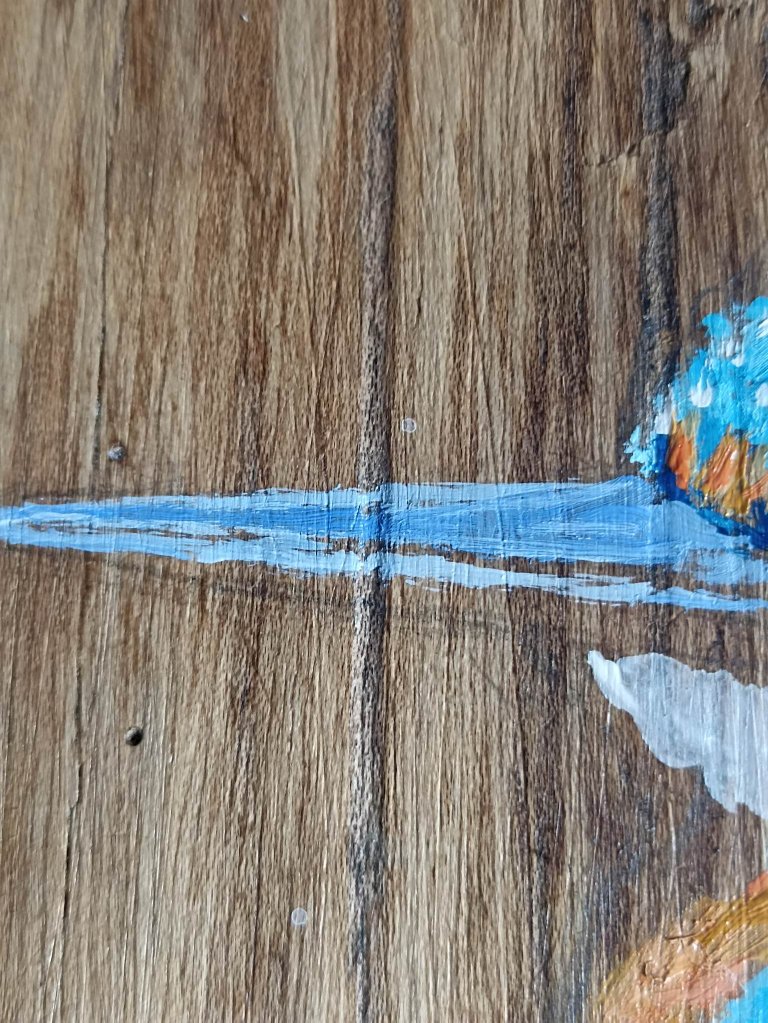 | 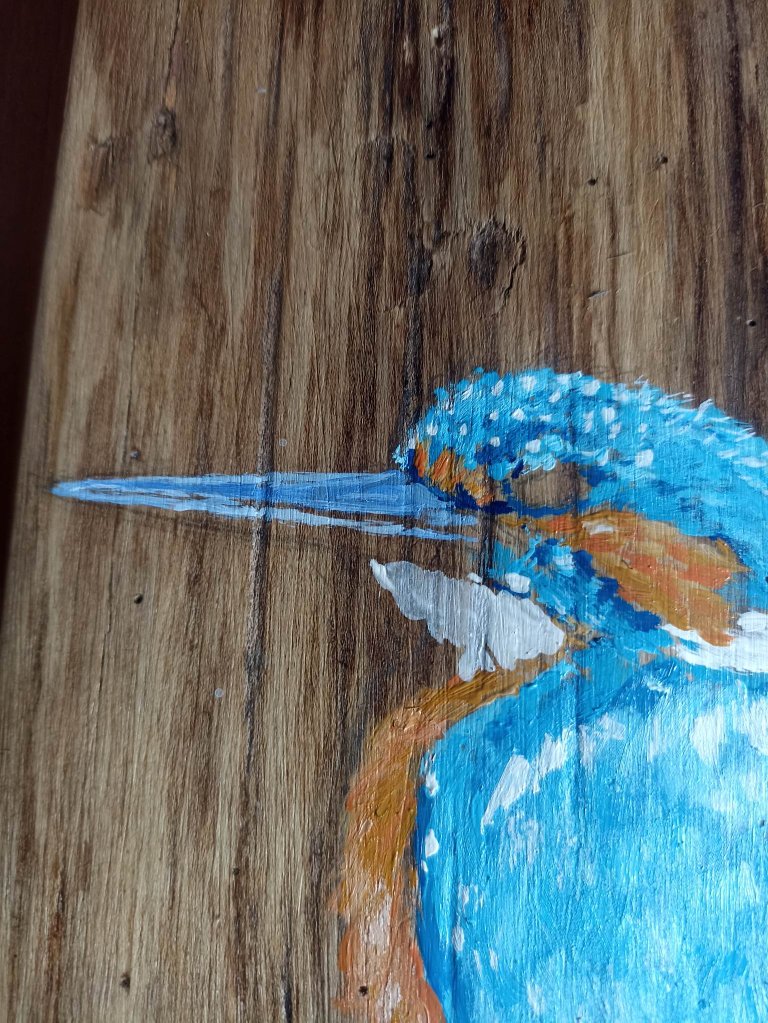 |
Then I change colors in the tones to paint the other feathers, for that I use ocher yellow paint, mixed with white and also with a little orange, with the combination of these 3 tones I start to paint all the different wings. I also continue to reinforce the blue colors that I had painted before a bit, whenever I am painting other details are obvious and at that very moment I correct them. When I consider all that area finished, I begin to paint the beak of the bird, which is not completely black since the light reflections must be highlighted very well.
Luego cambio de colores en los tonos para pintar las otras plumas, para eso utilizo la pintura de color amarillo ocre, mezclado con blanco y también con un poco de naranja, con la combinación de estos 3 tonos comienzo a pintar todas las alas diferentes. Igual sigo tambien reforzando un poco los colores azules que había pintado antes, siempre que estoy pintando otros detalles van saltando a la vista y en ese mismo momento los corrijo. Al dar toda esa zona por terminada comienzo a pintar el pico del ave, que no es negro por completo ya que hay que resaltar muy bien los reflejos de luz.

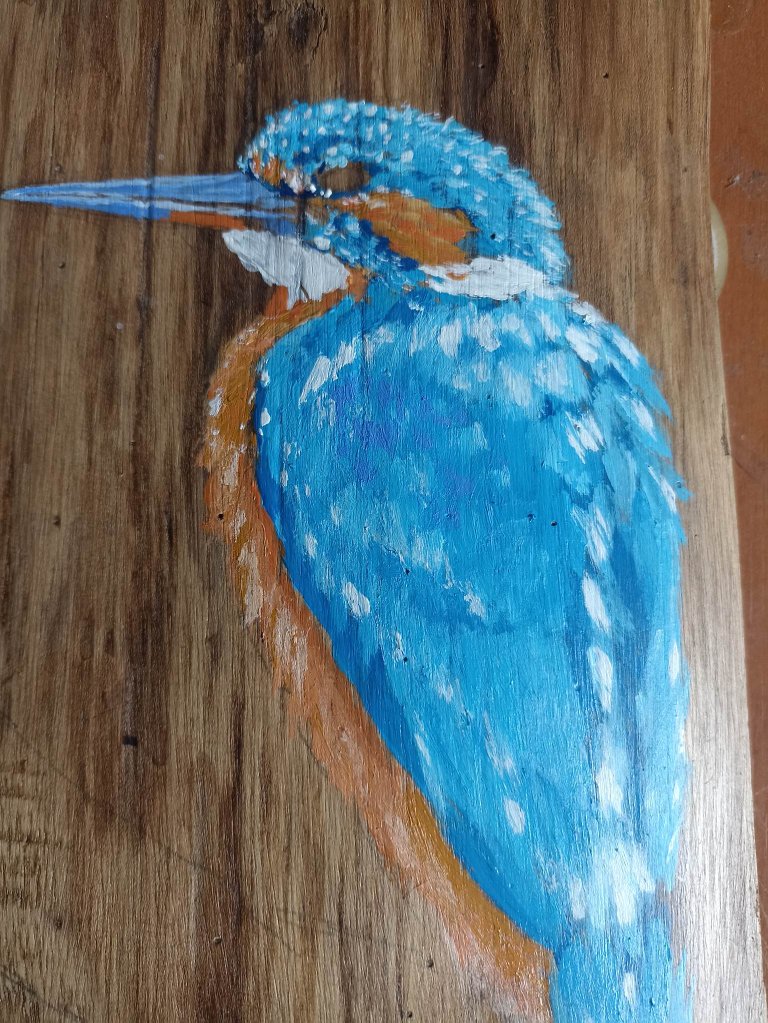 |  |  |
|---|---|---|
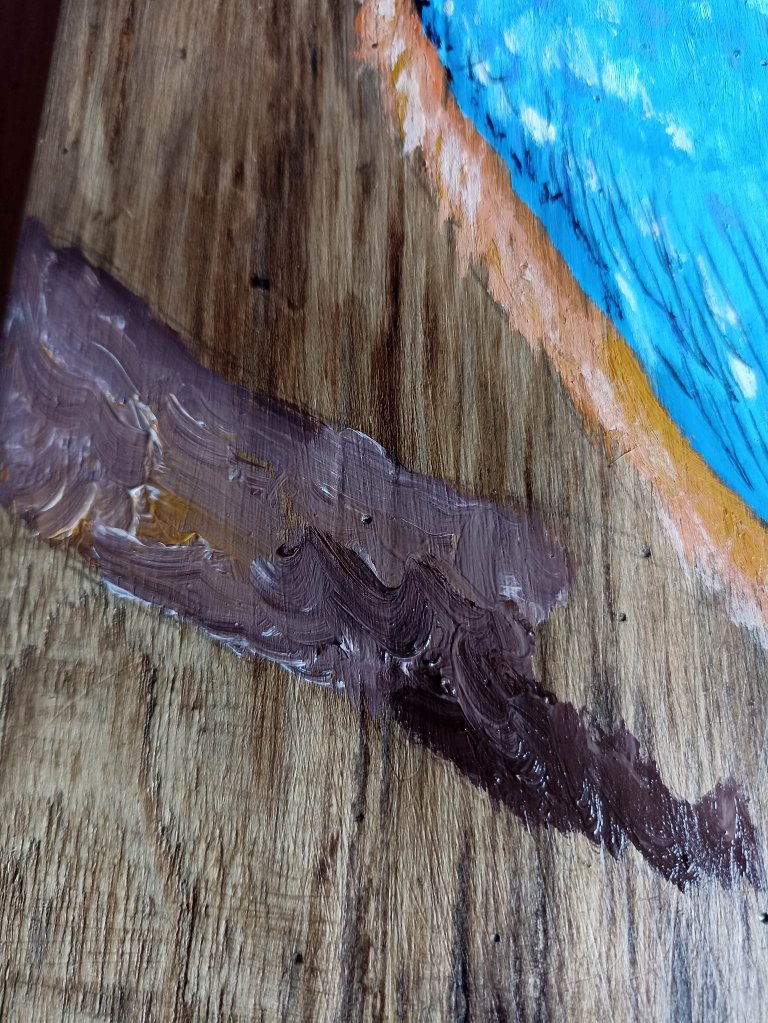 | 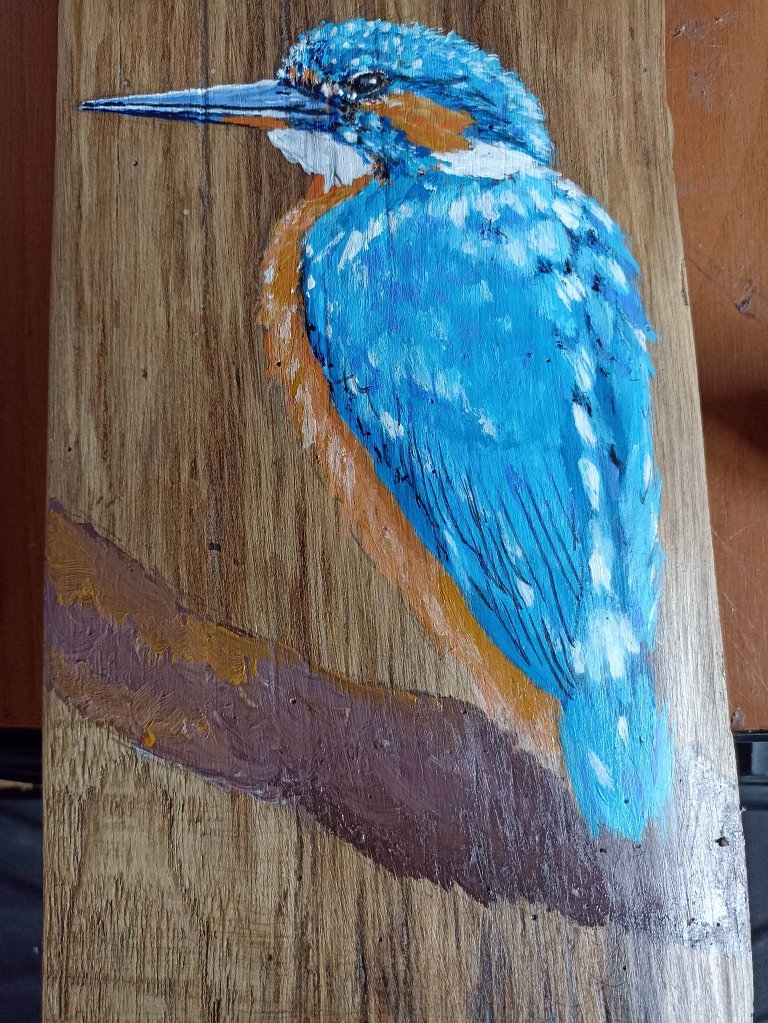 | 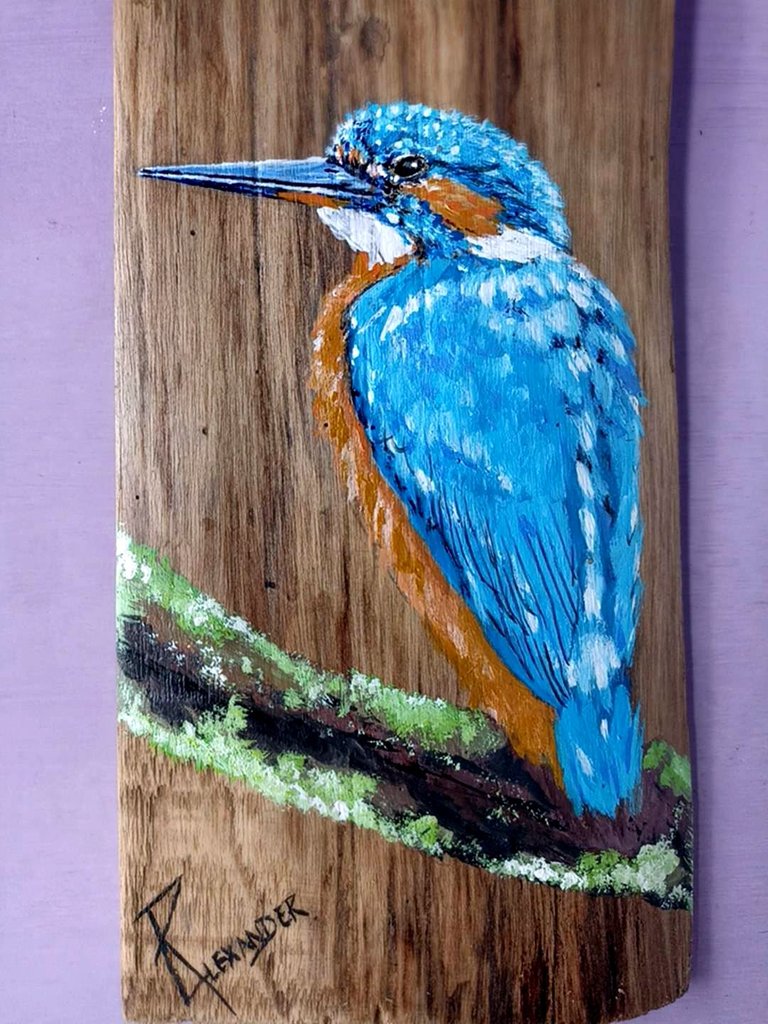 |
Then I continue to make the beak and there I use the brush that I had at the beginning since it must be a job with patience so that it looks good and does not get damaged. So I use various shades of blue and finally the color black to darken the most necessary parts. To finish I paint a branch where the Kingfisher will be perched and in this way it is finished.
Seguidamente continuo haciendo el pico y ahí utilizo el pincel que teía al principio ya que debe ser un trabajo con paciencia para que quede bien y no se dañe. Así utilizo varios tonos de azul y por último el color negro para oscurecer las partes más necesarias. Para finalizar pinto una rama donde estará posado el Kingfisher y de esta manera queda finalizado.


